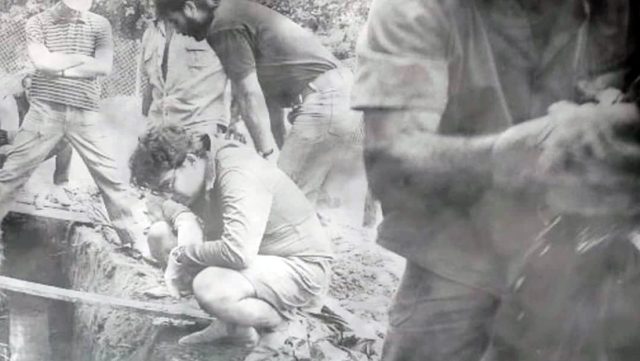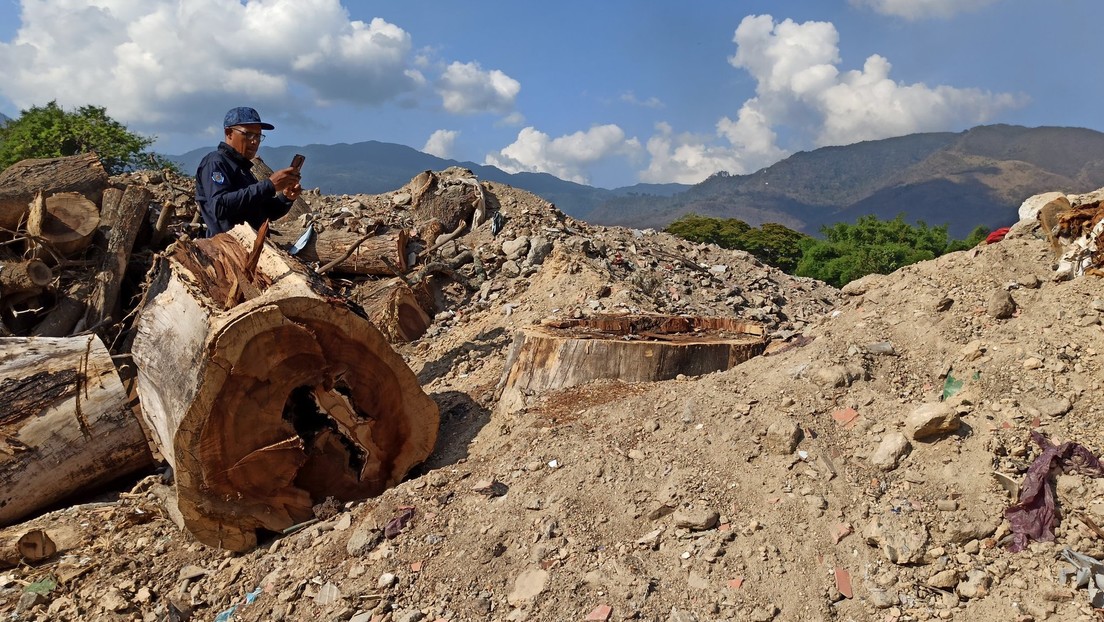Dimas Antonio Casemiro, a working class militant, was 25 years old when he was tortured and murdered in 1971 by State agents during the military dictatorship in Brazil (1965-1985).
His family searched for him for 47 years until, in August 2018, his mortal remains were delivered to his relatives, who were finally able to bury and say goodbye to him, explains journalist Marta Miera in a report for RT.
He was the first person identified by the team from the Center for Forensic Anthropology and Archeology (CCAF), created in 2014 in Brazil at the request of the relatives of 42 persons who had disappeared, whose bodies were abandoned in the clandestine grave of Perus, on the outskirts of Sao Paulo. The team is close to concluding the analysis of more than 1,000 boxes with bone remains extracted from the pit.
“It is about restoring to families the right to bury and carry out the funeral rituals of their loved ones and clarify for Brazil that there was a severe military dictatorship, which had as one of its main actions the disappearance of opponents who thought and acted differently from what the military regime dictated», explains Edson Teles, coordinator of CCAF, to RT.
Months after Casemiro’s discovery, the identification of Aluízio Palhano Pedreira Ferreira, one of the main Brazilian union leaders of that period, was announced.
Ferreira had two children, when in 1971, at the age of 48, he was killed at the Internal Defense Operations Center (DOI-CODI), under the command of General Carlos Alberto Brilhante Ustra, one of the greatest torturers of the military regime.
Ustra has been publicly praised by President Jair Bolsonaro on several occasions, including when in 2016, as a deputy, he voted in favor of impeaching former leftist president Dilma Rousseff, who was imprisoned during the dictatorship.
The discovery in Brazil
The ‘hole’, about 2.70 meters deep, was opened in the 70s in the Dom Bosco cemetery to deposit the bodies of homeless people, unclaimed dead or victims of police repression.
A good part of the politically disappeared were buried as indigents or under false names, but in the documents of the Police or the Legal Medical Institute they were filed with a T written in red ink pen to identify them as «terrorists».
The grave of Perus became one of the most important material evidence of the violation of human rights perpetrated during the dictatorship and triggered a truth-seeking process unprecedented to that date in the country.
In the book ‘Vala de Perus: una biografía’, the writer Camilo Vannuchi describes the moment in 1990 when Antonio Pires Eustáquio, administrator of the cemetery during the dictatorship, revealed the existence of the grave to investigative journalist Caco Barcellos.
“Here is a ‘hole’ in the cemetery, a clandestine ossuary where they dumped the remains of some 1,500 people buried as paupers, in 1976. I assure you that the bodies you are looking for are hidden in this ‘hole’. They are the people who disappeared from the accounting books“, he assured.
A total of 1,049 bags with human bones were found, and in about 200 the bones were mixed. Since the discovery, the remains have been analyzed by three universities and, amid disputes over the funding of the research, the work has been paralyzed on several occasions, which has contributed to the degradation of the material, mistreated for years.
When the CCAF took the reins in 2014, it set itself the goal of clarifying the whole truth. Until that date, three political militants had been identified: Denis Casemiro, brother of Dimas, in 1991; Frederico Eduardo Mayr, in 1992, and Flávio Carvalho Molina, in 2005.
“Our job is to receive the boxes, sanitize them, open them and estimate the age, sex and height. The profile is compared with that of the 42 political missing persons that we are looking for and if there is something that relates to them, it goes to the genetic stage in which a bone sample is extracted from that individual and sent to a laboratory in the Netherlands», says Teles.
«Obstacles and Fears»
For Teles, the work has taken on even more significant relevance since Bolsonaro, a staunch defender of the military dictatorship in Brazil, came to power in 2019.
“In addition to returning their loved ones to the living relatives and making historical reparation, our work has great political importance for the present, to the extent that each disappeared and identified individual is proof that the version of the current government is false», he asserts.
His work – he says – is wrapped in «obstacles and fears». “Currently, we are in a rented place and there is a risk of losing the property and that everything will come to a standstill (…) there is no political will to reach a solution, which causes us to fear because we know that it is a story that demonstrates a narrative of the facts contrary to what the current president is publicly saying”, he explains.
For the expert, this work is essential to contribute to «democratic values having greater space in society, since serious State violations by public security still occur today, targeting the black and poor peripheral population».



